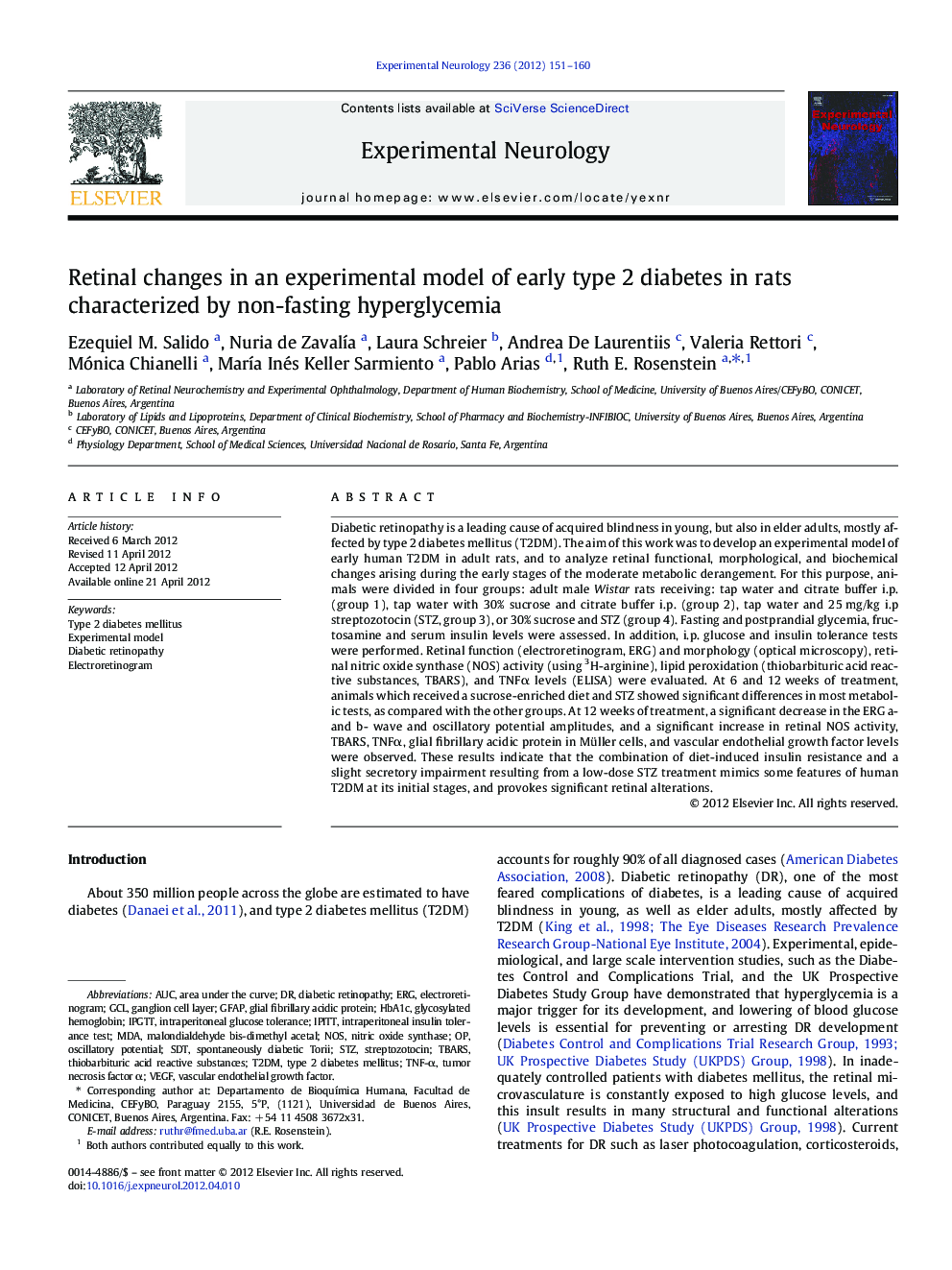| Article ID | Journal | Published Year | Pages | File Type |
|---|---|---|---|---|
| 3055675 | Experimental Neurology | 2012 | 10 Pages |
Diabetic retinopathy is a leading cause of acquired blindness in young, but also in elder adults, mostly affected by type 2 diabetes mellitus (T2DM). The aim of this work was to develop an experimental model of early human T2DM in adult rats, and to analyze retinal functional, morphological, and biochemical changes arising during the early stages of the moderate metabolic derangement. For this purpose, animals were divided in four groups: adult male Wistar rats receiving: tap water and citrate buffer i.p. (group 1), tap water with 30% sucrose and citrate buffer i.p. (group 2), tap water and 25 mg/kg i.p streptozotocin (STZ, group 3), or 30% sucrose and STZ (group 4). Fasting and postprandial glycemia, fructosamine and serum insulin levels were assessed. In addition, i.p. glucose and insulin tolerance tests were performed. Retinal function (electroretinogram, ERG) and morphology (optical microscopy), retinal nitric oxide synthase (NOS) activity (using 3H-arginine), lipid peroxidation (thiobarbituric acid reactive substances, TBARS), and TNFα levels (ELISA) were evaluated. At 6 and 12 weeks of treatment, animals which received a sucrose-enriched diet and STZ showed significant differences in most metabolic tests, as compared with the other groups. At 12 weeks of treatment, a significant decrease in the ERG a- and b- wave and oscillatory potential amplitudes, and a significant increase in retinal NOS activity, TBARS, TNFα, glial fibrillary acidic protein in Müller cells, and vascular endothelial growth factor levels were observed. These results indicate that the combination of diet-induced insulin resistance and a slight secretory impairment resulting from a low-dose STZ treatment mimics some features of human T2DM at its initial stages, and provokes significant retinal alterations.
► We develop a model of early human type 2 diabetes mellitus in adult rats. ► Sucrose feeding and low dose of streptozotocin induced postprandial glycemic spikes. ► Altered glucose metabolism provoked alterations in retinal function. ► Increased retinal NOS activity, TNFα, and oxidative damage were found in this model. ► This model mimics early stages of diabetic retinopathy.
